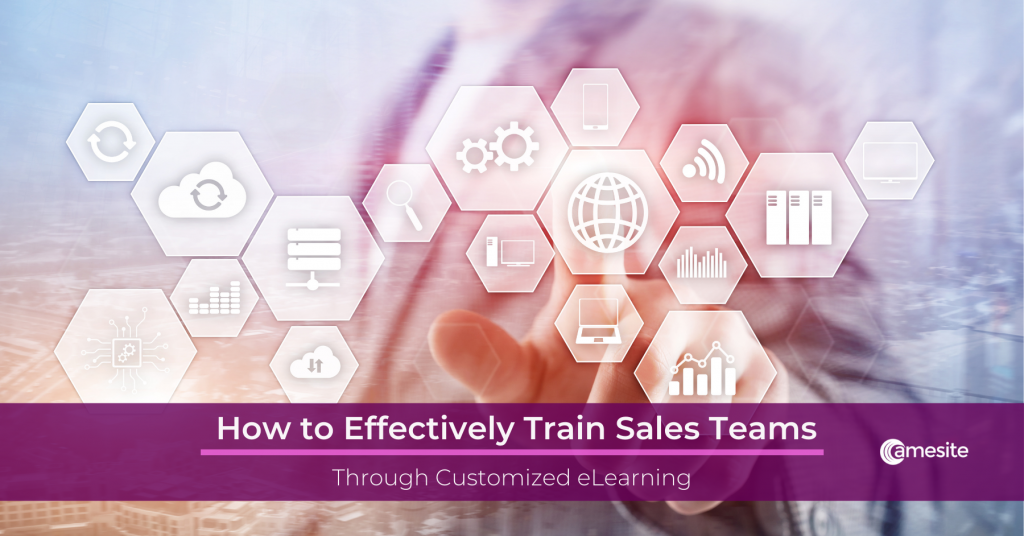 Back
Back

Many companies train their sales teams with a “one size fits all” approach — and the failure rate of that process in particular sales methodologies is 75 percent.[1] This means most companies train their sales teams to be average or worse.[2] Sales reps know there’s a problem, with 26 percent saying their sales content training is ineffective.[3] Sales teams’ value and training experiences hold even greater significance today, amid the premium placed on the care, sensitivity and human touch of communicating amid the pandemic.
Top sales performers — those who close deals at a 51 percent higher rate than their peers – see networking platforms as “very important” to their success.[4] They can tell when their training covers only a fraction of the topics they could benefit from. And yet, 45 percent of companies offer anywhere from two to five topics in their sales training presentations.[5]
The list of critical need goes far beyond such limited choices. A full agenda covers negotiating, prospecting, closing, call planning, qualification, presenting value, pipeline management, managing objections, presenting value, building relationships and identifying customer needs.
Indeed, employees want to know what they are doing well and where they can improve … “such career conversations are critical to engagement and retention.”[6] Yet traditional methods prove less reliable in today’s workplace. The solution requires a more sophisticated approach that goes beyond routine annual reviews, a singular focus on quantifiable performance, minimal-to-no guidance, and one-way communications on goals and objectives.
Research shows the top barrier to delivering effective sales training is failing to hold salespeople accountable for applying the skills they've learned.[7] A near-unanimous 96 percent of decision makers say they’re more likely to consider a brand’s products or services if sales professionals have a clear understanding of their business needs.[8]
Elearning is a solution to all of these challenges because it can be customized, global, flexible and deliver real measures that drive accountability. Let’s explore some of the best practices that create good programs.
BEST PRACTICES IN TRAINING AND SHARING OF KNOWLEDGE
Following best practices in training create sales wins. Training needs to be individualized, able to track sales performance continuously and help the entire team learn and better communicate. The top priorities also include developing a plan to efficiently and quickly onboard new sales team members and creating sales training that delivers updates to new learning—anywhere, anytime.
Another overlooked aspect of top performance is a high degree of collaboration.[9] Knowledge sharing—the exchange of information across an organization—is technically easier than ever because of the internet, software development, digital communication tools and a seemingly endless flow of technological innovations.[10] But it’s human nature for people to want to hoard their knowledge if they feel threatened. That means business leaders must streamline and incentivize workers to exchange their knowledge.
The benefits are many: knowledge sharing promotes the healthy, sustainable growth of modern businesses, enhances employee retention, keeps morale high, holds salespeople accountable and ensures the sales team’s updated skill building.[11]
Knowledge sharing comprises internal values and attitudes — and such tacit knowledge is much harder to store within a knowledge management system.[12] Leadership needs to show by example, make themselves accessible to employees at routine intervals, and encourage regular feedback cycles among employees, management and departments. Another subtle leadership must-have is to prioritize psychological safety to ensure that employees feel comfortable sharing expertise with one another without fear of competition or job instability. This ensures that employees are open about what they don’t know. A healthy knowledge sharing culture is, in a way, employee retention insurance.[13] But, when workers hoard their expertise, the company is setting up a culture in which people can take what they can from their time there and leave, crippling the organization in the process.[14]
HOW AMESITE SOLVES SALES TRAINING – AND SUPPORTS TEAM WINS
Amesite’s fully branded-to-you training platform offers unprecedented ease of use, custom content and fresh, relevant information delivered daily to your sales force. Most importantly, Amesite’s solutions drive unprecedented engagement. The platform supports the free flow of information and rewards engagement, so you’re not only making it easier for your employees to do their jobs well, you’re also reaping dividends when it comes to attracting the best talent.
Amesite offers a way forward with:
Amesite handles hosting, so all products are auto-scaling out-of-the-box — no additional complexity for the customer.
With Amesite, you will be up and running in 30 days with:
References:
[1] SellingPower blog. Feb. 13, 2019.
https://blog.sellingpower.com/gg/2019/02/how-agile-selling-leads-to-better-results.html Accessed 12 October 2020.
[2] Training Industry. “Your One-size-fits-all Sales Training Is Killing You.
https://trainingindustry.com/articles/sales/your-one-size-fits-all-sales-training-is-killing-you/ Accessed 13 October 2020.
[3] HighSpot. SiriusDecisions Sales Enablement: Planning Assumptions 2020. Accessed 13 October 2020.
[4] LinkedIn State of Sales Report Pocket Guide. business.linkedin.com/content/dam/me/business/en-us/sales-solutions/cx/2019/pdfs/stateofsales-pocketguide-r2.pdf Accessed 13 October 2020.
[5] The Salesperson’s Perspective on the impact of Sales Training 2018.
trainingindustry.com/articles/sales/the-salespersons-perspective-on-the-impact-of-sales-training Accessed 13 October 2020.
[7] Richardson. “The Power to Sell.”
https://www.richardson.com/wp-content/uploads/2017/08/measuring-sales-training-effectiveness.pdf Accessed 13 October 2020.
[8] BrainShark.”Sales Enablement Statistics You Have to See.”
https://www.brainshark.com/ideas-blog/2018/september/sales-enablement-statistics?language=es
[9] Slack Group. “Knowledge Sharing is Caring.”
https://slackhq.com/knowledge-sharing-is-caring Accessed 13 October 2020.
[10] Slack Group. “Knowledge Sharing is Caring. Accessed 13 October 2020
https://slack.com/blog/collaboration/knowledge-sharing-is-caring
[11] RAIN Group. 7 Reasons Why Sales Training Fails.
https://www.rainsalestraining.com/blog/7-reasons-sales-training-fails Accessed 13 October 2020.
[12] Slack Group. “Knowledge Sharing is Caring. Accessed 13 October 2020
https://slack.com/blog/collaboration/knowledge-sharing-is-caring
[13] Harvard Business Review. “How to Prevent Experts from Hoarding Knowledge.” https://hbr.org/2014/12/how-to-prevent-experts-from-hoarding-knowledge Accessed 13 October 2020.
[14] Harvard Business Review. “How to Prevent Experts from Hoarding Knowledge.” https://hbr.org/2014/12/how-to-prevent-experts-from-hoarding-knowledge Accessed 13 October 2020.